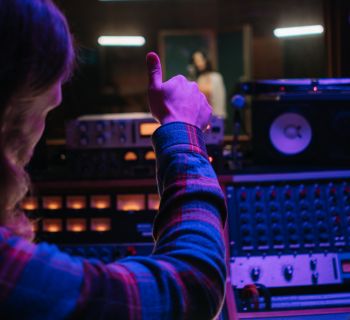
What Does an Audio Designer Do on a Daily Basis?
Audio designers play a crucial role in the world of sound design, creating auditory experiences that enhance various media, including films, video games, advertisements, and live performances. But what does a typical day look like for them? Let’s delve into the daily responsibilities and tasks of an audio designer.
A Typical Day in the Life of an Audio Designer
Morning: Project Briefings and Planning
Most audio designers start their day by reviewing their schedules and project briefs. This could involve understanding the requirements for an upcoming sound design project, whether it's a new video game or a film in post-production.
During morning meetings, audio designers discuss with directors, producers, and other team members the vision for the project, the style of sound design expected, and any specific needs for the characters or scenes. These discussions are vital not only for task allocation but also as foundational inspiration for the sound design elements to be created later.
Mid-Morning: Sound Recording and Collection
After setting the scene in the morning meetings, audio designers often transition to sound recording. This phase involves capturing specific sounds or creating sound effects that will be used in their projects.
Credit goes to technology and creativity here—audio designers may experiment with a range of tools and techniques, from recording natural sounds in outdoor spaces to using innovative software to synthesise sounds. Equipment used can range from high-quality microphones to portable recording devices, allowing the audio designer to experiment and gather a wide array of sound samples.
Afternoon: Editing and Processing Sounds
Once they have gathered the necessary sound clips and recordings, audio designers spend much of their afternoon editing and processing these sounds using Digital Audio Workstations (DAWs).
This part of sound design is crucial, as it involves tidying up recordings, adding effects, and tweaking sound parameters to achieve the desired audio quality. This is where the magic happens—audio designers finesse the sounds, ensuring they fit the emotional tone of the scene or event they’re working on. They might layer multiple sound effects to create depth and dimension or create unique soundscapes that evoke certain feelings in the audience.
Late Afternoon: Collaboration and Feedback
In the late afternoon, audio designers often collaborate with other department heads to integrate sounds into the broader project. This collaboration is paramount, especially when working on projects like films or video games, where sound interacts with visual elements.
Feedback sessions are common during this period. Audio designers play their mixes for directors, sound mixers, and other team members to gauge their reactions and make necessary adjustments based on their input. This dynamic aspect of sound design fosters a collaborative spirit, and the ability to adapt quickly becomes essential.
Evening: Final Review and Documentation
As the day winds down, audio designers often spend this time reflecting on the day's progress, making minor tweaks, and preparing for the following day. This might involve documenting their work, noting what sounds were used where, and maintaining an organised library. Maintaining a meticulous database of all sound assets is critical for future projects and continues to aid collaboration across teams.
In some cases, audio designers might also engage in additional training or skill development, be it through online courses or software workshops. This ongoing education ensures they remain proficient in the latest sound design techniques and tools.
Conclusion: The Artistic and Technical Balance of Audio Design
Working as an audio designer involves a fascinating blend of artistry and technical skill. From initial concept discussions, through recording and editing, to collaboration and feedback, each day offers new challenges and opportunities for creativity.
As we’ve explored, sound design isn't just about making things ‘sound right’—it’s about crafting an audible landscape that enhances and tells a story. The daily life of an audio designer may vary widely depending on the project, but the ultimate goal remains constant: to create a captivating auditory experience that resonates with the audience.
In conclusion, whether it’s through sound effects in video games, dialogues in feature films, or fully realised audio experiences in installations, audio designers are vital to the narrative and emotional impact of their projects.
Tags: Audio, Engineers, Design, Voice
Related Articles
- Southern Accounting Services
- When does a voice start getting wrinkles?
- The language heard in voice recordings!
- Raffan Kelaher and Thomas
- More language heard in voice recordings!

